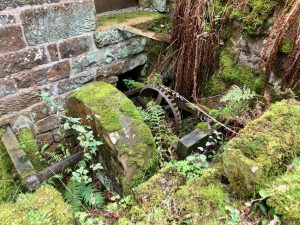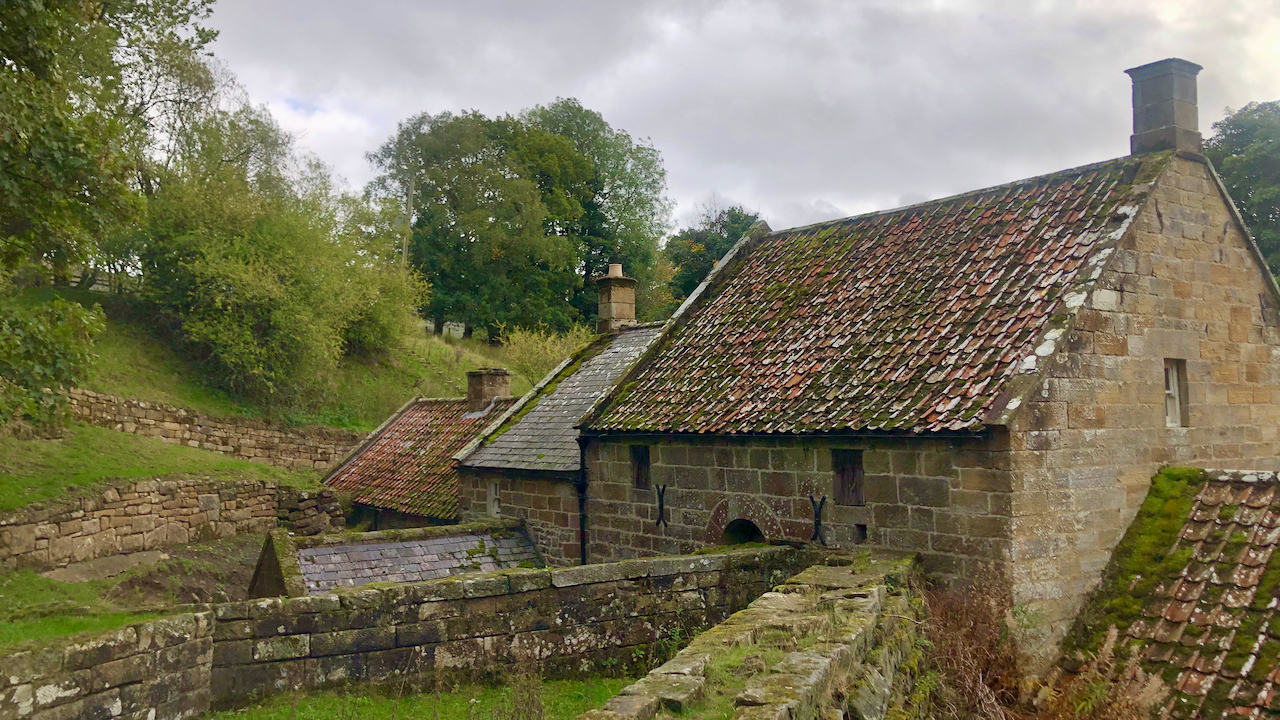Another view of the rear of Bransdale Mill but from a different viewpoint standing on the wall of the mill-race.
The first record of a mill in Bransdale is a late 13th century will, when the Mill was included in the estate of the Lady de Stuteville, who left her estate to her son Baldwin Wake1“The Mill at the World’s End”. Bransdale Mill. Information for Volunteers. The National Trust. Undated.:
“In a certain dale called Brauncedale there are 25 natives whose rents are £4.14.3d. They shall give nuts and fowls and do harrowings and reapings in autumn. William Bondi holds 14 acres and pays yearly at Easter 2/6 and at Michaelmas 2/6. With his three neighbours with their oxen joined together shall plough for one day at the winter sowing worth a 1d and he ought to harrow for one day at the winter sowing worth 1d. He shall plough at Lent, sowing for two days, he ought to hoe for one day. He shall reap in the autumn for 9 days carry corn for one day. He shall give one fowl at Christmas called Wodehennes and shall give two strikes of nuts at Martinmas. He shall give every tenth pig for pannage.”

Shortly later, in 1301, when people were taxed in aid of the Scottish wars, the returns show that Alan was the miller and he paid 3d. in tax. In the next dale, Farndale, the miller’s servant paid the same amount 3d., indicating that the Bransdale mill did not produce a good income.
The next written record appears in the Humberstone Survey of the lands confiscated from the Northern Earls after their rebellion against Elizabeth I in November 1569. Here George Cowder held the mill at 10 shillings a year. In this document the mill is described as a soke mill. Soke was a custom, later backed by the force of law, whereby the mill had a monopoly of all the corn both locally grown and imported. This was very lucrative but unpopular with the local dalesfolk.
By 1610, the mill was being run by a Henry Petch, who paid the same yearly rent of 10 shillings. Tthe level of agricultural activity in the dale had not changed much since 1301. There were still only about 250 acres of ploughable, and thus taxable, land in the dale, a third of which at any one time would be put down to corn, for grinding at the mill.
The present buildings date from the early 19th-century when William Strickland became the miller. He developed the simple, but not very lucrative mill into an industrial complex. For further history on the mill’s latter years, see here, here, and here.
- 1“The Mill at the World’s End”. Bransdale Mill. Information for Volunteers. The National Trust. Undated.

Leave a Reply